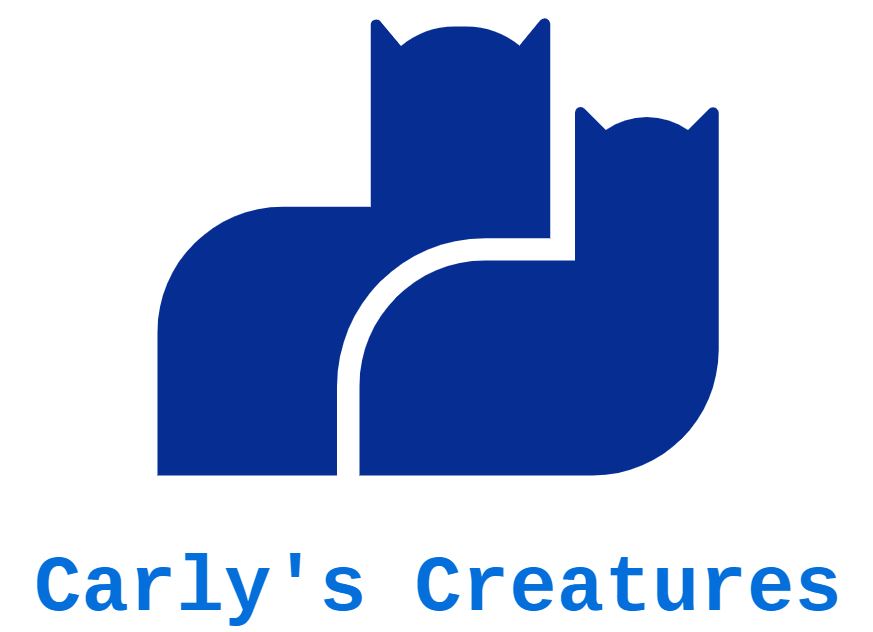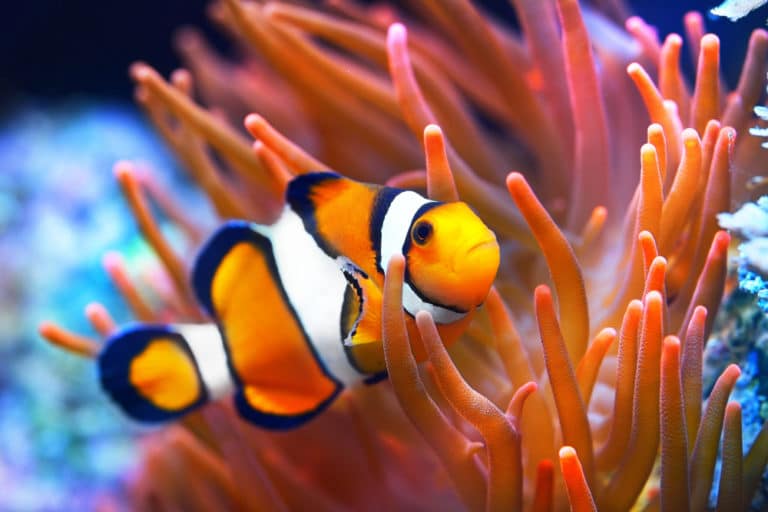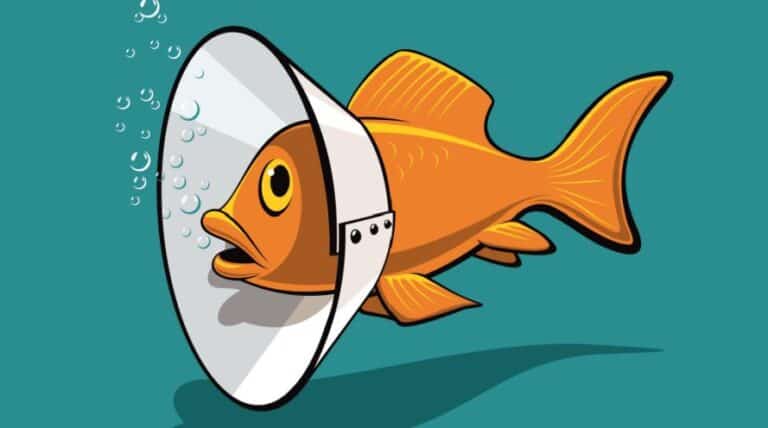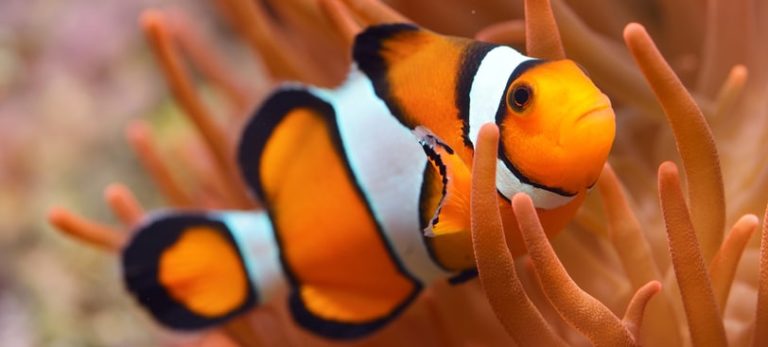How to Take Care of Your Goldfish
How do I take care of my goldfish?
That is a very common question, and I’m glad you asked. Goldfish are great fish for beginners because they are generally low to medium maintenance. With all of the different varieties to choose from, they are also great to have in your advanced aquarium! Let’s take a closer look at how to property take care of your goldfish. You can click on the steps listed below to skip to that section.
Step 1: Select the Proper Tank Size
Step 3: Lighting, Decorations & Substrate
Step 4: Introducing Your Goldfish to Their Tank
Step 6: Cleaning Your Goldfish Tank
Step 1: Select the Proper Tank Size
Why should the tank size matter? The size of your tank is very important for the health and overall happiness of your goldfish. The variety of goldfish that you want will dictate what size tank you need and vice versa. If you only have room for a smaller tank, then you need to choose the correct goldfish variety that is best suited for that size. Do your research before committing one way or another. For example, Common and Comet goldfish need at least 30 gallons for just one and about 10 additional gallons for each goldfish after that. Most people think that a goldfish will always remain very small and only live a very short time. This isn’t true at all. A goldfish will adapt its size based on the size of its environment (tank). A goldfish can also live up to 10-20 years! The average growth rate of a goldfish is roughly one inch per year. Can you believe that? This, of course, is why you want to choose a tank with enough room for your goldfish to grow properly.
For a list of “Best Glass Tanks for Your Aquarium”, click here.
For a list of “Best Acrylic Tanks for Your Aquarium”, click here.
Step 2: Proper Filtration
The life span of your new goldfish is very much dependent on the quality of its environment. The tank was just the first step. Proper filtration is the next step. Filtration plays a very key role in your goldfish living a happy and healthy life. Having clean water in the tank at all times is essential because it keeps your goldfish from getting any disease. Always be sure to use the correct filter for the size of your tank.
Make sure your filter has all 3 stages:
- Mechanical for discarding larger waste
- Chemical for removing discoloration and odors
- Biological to break down fish waste and ammonia
Step 3: Lighting, Decorations & Substrate
Lighting
If you’ve purchased a tank from my list of suggested tanks above, you more than likely already have a hood for your tank. If you did not, you need to make sure that you have a hood on your tank with lighting. Number one, it protects your goldfish from foreign substances getting into your tank. Number two, it provides the necessary light for your goldfish. Goldfish are awake and active during the day. This means you need to use the proper lighting on your fish tank to make sure your goldfish get a healthy sleep cycle. Fish that don’t sleep well or aren’t getting enough sunlight tend to lose their vibrant colors. Keep your aquarium lit for about 10-12 hours per day.
Decorations
Less means more. Goldfish actually do better with less decorations in their tank. You definitely want to have some in there for them to explore, but you don’t want to overwhelm them. Goldfish aren’t the best swimmers in the fish world so the fewer decorations they have to navigate around the better. I would suggest having one or two focal pieces as well as some artificial plants. I would avoid using real plants, especially if you are a beginner. Real plants take a little bit more knowledge and expertise to properly grow. Remember, we want to create the ideal environment for our goldfish. The less variables, the easier it will be to maintain.
Substrate
Substrate is just another word for gravel. Goldfish are known for eating the gravel on the bottom of the tank while searching for fallen food particles. This can often times lead to the gravel getting stuck in the goldfish’s throat, causing major problems. I recommend larger gravel for your goldfish’s tank for two reasons. The first is that it won’t be able to fit in the goldfish’s throat and is heavier for the goldfish to pick up. Whew! Problem solved. The second reason is that larger gravel is easier to clean.
Step 4: Introducing Your Goldfish to Their Tank
Once you have all of your decorations placed properly in your tank, you’ll need to fill the tank with either distilled water or tap water that has been treated with a water conditioning solution. Your ideal pH range for goldfish is between 6.0 and 8.0. The ideal pH depends on the variety of goldfish that you have. You’ll need to do more research to find the ideal pH level for your particular type of goldfish. Before you introduce the fish to the tank, you need to test the tank for ammonia, nitrite and nitrate. You want zero ammonia, zero nitrite and less than 20 nitrate. It’s time to add your Goldfish!
***Keep in mind, if you want to introduce more goldfish to your goldfish community, you must first quarantine them to make sure they aren’t infected with any disease. The quarantine period should be 2-3 weeks to be safe. ***
Step 5: Feeding Your Goldfish
I know I know, this sounds pretty basic. The problem most people have with their goldfish when I comes to feeding is actually overfeeding them. Goldfish, and aquarium fish in general, can actually die from over eating. You’re going to want to feed your fish 1-2 times per day.
Did you know that goldfish are also creatures of habit? Goldfish also like a schedule. Feed your goldfish at the same time of day and preferably in the same spot in the tank.
You can also change up the different types of food that they eat so they have some variety. Just be sure to follow the label so you don’t overfeed them. One type of food substance can have a different portion size than the next. Some food types include:
- Flakes
- Pellets
- Bloodworms
- Brine Shrimp
Note: If you decide to feed your goldfish live food, you have a slightly higher risk of transferring disease to your goldfish.
Solution: Frozen and freeze-dried foods are available.
What if I’m going on vacation and I can’t feed my fish?
This is a very common question. We all have lives right? The easiest solution, of course, would be to ask a friend or neighbor to come and feed your fish. That would solve that problem instantly.
If that’s not an option for you, you could purchase an automated fish feeder. Take a look at my recommendation for an automated fish feeder by clicking here.
Step 6: Cleaning Your Goldfish Tank
Your goldfish’s tank is their world, so it’s crucial that you keep their world clean to have a thriving aquarium. You generally want to clean their tank every week or two, even if you have a great filtration system. This will keep your goldfish in an environment where they can really thrive. Do clean your tank properly, use the following steps.
Step 1: Drain Your goldfish tank:
You’re going to want to move your goldfish to a temporary tank. You can use a fish bowl if you don’t have a smaller tank to transfer them into. Fill the smaller tank or bowl with the water from the aquarium so you don’t shock the goldfish with brand new water that they haven’t been exposed to. You can also use fresh water if you treat the water with a product that eliminates chlorine and other chemicals.
Turn off all of the tank’s equipment such as the filter and heater. You want to make sure the equipment doesn’t get damaged while you are cleaning the tank.
You want to use an aquarium vacuum to vacuum out a little less than half of the water in the tank. I would recommend siphoning the water into a large bucket so you can easily dispose of it. Now the real fun begins.
Step 2: Sanitize Your Tank:
The type of cleaning tool you use will all depend on whether you purchased an acrylic tank or a glass tank. If you have an acrylic tank, you want to stay away from abrasive materials so you don’t scratch the tank. Use whichever tool you choose to clean the algae from the sides of your tank. You can use that same vacuum to suck up any of the easily accessible algae that may be floating around the remaining water in the tank.
Once that is completed, mix up the gravel on the bottom. This will more than likely release more of the waste that you want to remove from the tank. Do your best to clean as much substrate on the bottom as possible.
Remove all of the decorations from the tank one by one and give them a thorough cleaning. You can use any material you want to clean those. They are often durable enough to withstand abrasive materials. Don’t rub too hard though. You don’t want the color of the decorations to get scrubbed off. Once they are all clean, go ahead and put them back in the tank. You can switch of the location of the decorations if you want to. This will give your goldfish a “new environment” for them to explore!
Last, but certainly not least, clean your filter! Remember to always clean the filter with the water that you vacuumed into your bucket. If you use untreated water, such as tap water, you risk killing good bacteria. Get off all of the debris that you can see. You can let it sit in the bucket a few minutes to help loosen some debris that may be stuck.
Step 3: Refill Your Tank
Fill a clean bucket with tap water. You can really use any receptacle that will hold water, but I recommend the 5 gallon buckets with a handle that you can get from any home improvement store. When the bucket is full, add your de-chlorinator solution to the bucket and let it sit 5 minutes to make sure it’s effective. Always refer to the label on the de-chlorinator to make sure you do not use too much or too little. Typically, 1-2 drops per gallon should do the trick.
Once you’re confident that the solution has worked properly, slowly refill the tank with the water from the bucket. DO NOT JUST DUMP THE WATER IN! You will risk knocking over decorations and unsettling the substrate that you just worked so hard to clean. Wait 3-5 minutes before adding the next bucket of water into the tank. This will time up perfectly since you need about 5 minutes to fill and de-chlorinate the water in the next bucket.
Continue this process until your desired water level is reached.
Step 4: Reintroduce Your Goldfish
You can now turn back on your tank’s equipment. I recommend waiting 30 minutes before adding your goldfish back to the tank. You also want to make sure the water temperature is optimal before you reintroduce them so you don’t shock them. Once the water temperature is between 60-73 degrees Fahrenheit, you may gently transfer your fish back into their tank. YOU’RE ALL DONE!
Conclusion
A goldfish tank is a fun and rewarding hobby. It really isn’t that difficult to take care of your goldfish if you follow these simple steps that I’ve laid out for you. Remember to take your time and enjoy the process. Your goldfish will thank you for it!









